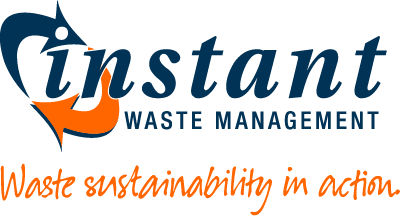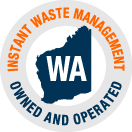Waste Management – What the Future Holds
25 June 2018
With the world’s population expected to reach 8.6 billion by 2030, waste generation is inevitably on the rise. The volume of waste sent to landfill and the devastating impact this has on the environment – and our health – is alarming to say the least.
While a surge in media coverage and education initiatives around global warming have made us more environmentally-conscious, initiating a recycling frenzy in certain communities, the growing population presents a bigger challenge. Not only does the increase in waste generation drive landfill, but the mounting demand for food and consumer products means global energy demand – and, in turn, pollution – is on the up.
More fossil fuels will be required to satisfy consumer demands – on both a personal and commercial level. Manufacturing will be on the rise; more coal and natural gas will be used to produce electricity for factories, offices and homes; and transport growth will drive fuel consumption and emissions of air pollution.
With our environment under threat, substantial measures to reduce landfill and cut global warming emissions are more critical than ever.

Recycling of Inert Waste within Australia Could Be on the Up
Until recently, China was importing over 30 million tonnes of waste annually, from across the globe. In 2016 – 2017 alone, Australia exported 1.25 million tonnes of recycled material to China.
However, in January this year China implemented its National Sword Policy, which restricts the import of 24 categories of waste, including mixed plastics, glass and cardboard to name a few.
These stringent new import standards have severely impacted the Australian recycling industry, with recycling commodity prices dropping by about 80%. As a result, with nowhere for the recycling material to go, local councils are facing cost rises of up to $50 million per year.
But it’s not all doom and gloom. According to Mike Ritchie, Managing Director of environmental waste advisors MRA Consulting Group, the National Sword Policy could present the nudge Australia needs to initiate a move towards processing recycled waste on-shore – and protect itself from future fluctuations in the global (and Asian in particular) recycling market.
Ritchie’s recently released paper China National Sword: The role of Federal Government outlines why he is calling for a $150 million Government investment in new infrastructure and systems, as well as a realignment of the Australian recycling policy.
Inert waste is easy to recycle in WA and doesn’t need to be exported. It’s therefore not at risk of significant price increases (outside of the landfill levy which is set to increase from $90 to $105 per tonne from 1st July 2018).

Waste to Energy – A Waste Management Revolution?
Not only has recycling become a key growth sector, but experts are seeking new ways to tackle the problem. Enlightened minds, innovative technologies and the health of our planet at stake are driving a waste management revolution.
Waste to energy (WtE) is an emerging series of technologies designed to generate energy from waste with minimum damage to the environment. While still in its infancy, the global WtE industry is projected to exceed $43 billion by 2024.
The range of waste products which can be converted to energy in the form of electricity and / or heat is widespread and includes:
- Biomass or biogenic waste, such as food, garden waste, paper, cardboard, wood and leather.
- Non-biomass combustible materials, such as plastics and synthetic materials made from petroleum.
- Non-combustible materials, such as metals and glass.
This conversion of waste into a fuel source can be achieved through a range of processes:
Incineration:
This is currently the most common method for processing waste into fuel and involves burning organic waste at high temperatures. The heat generated during this process is used to create energy. While the emissions released during the incineration process is a widely debated topic, modern incineration facilities use specialised equipment to prevent the release of harmful gas into the environment.
Gasification:
This process uses high temperatures to convert organic carbonaceous waste into carbon monoxide and carbon dioxide and, with the use of oxygen and / or steam. Combustion does not occur with this process, but a renewable energy is produced in the form of syngas, a renewable energy source which can be turned into transportation fuels, fertilizers and chemicals.
Pyrolysis:
Using high temperatures, pyrolysis is the thermochemical decomposition of organic waste to produce renewable energy (in the form of solids, liquids and gas), to be used as a fuel source.
Anaerobic Digestion:
This is a set of biological processes in which micro-organisms break down biodegradable waste into biogas, without the use of oxygen. Biogas can be processed into renewable natural gas or used as a transportation fuel. It can also be used to generate electricity and / or heat.
Landfill Gas Recovery:
As landfill waste decomposes, it produces methane. Left untreated, methane is harmful to the environment, however when safely extracted and processed, it can be used to create electricity.
In Australia, with the soaring energy prices and landfill levies on the rise, turning waste into renewable energy provides a tangible solution to both issues.
While thermal treatment of waste to energy is only small-scale in Australia, Dr. Stuart Wagland, Senior Lecturer in Energy & Environmental Chemistry at Cranfield University, believes – based on its success in the UK – this should be a key growth area for Australia.
Speaking at the 2018 Australian Waste to Energy Forum, Stuart cited political climate as one of the key drivers towards waste to energy in the UK, with attractive government incentives pushing industry growth.
He says the waste to energy industry – and, in particular, thermal treatment – is growing and evolving rapidly. “If you asked me where I thought the technology would be five years ago, I would have gotten it wrong. We have artificial intelligence creeping into our waste management…. It’s difficult to say what the future holds.”
But one thing is for sure, with innovative technologies being developed at such a rapid pace and global warming a hot topic across the nation, the future of renewable energy in Australia looks bright.
For more information on our sustainable waste management processes, please contact us.









